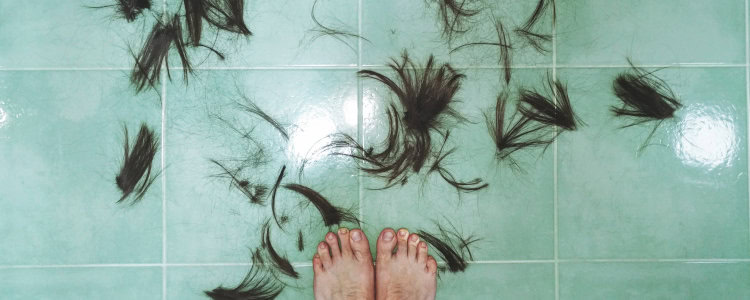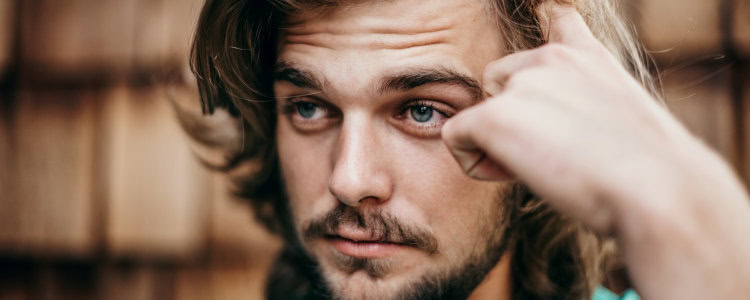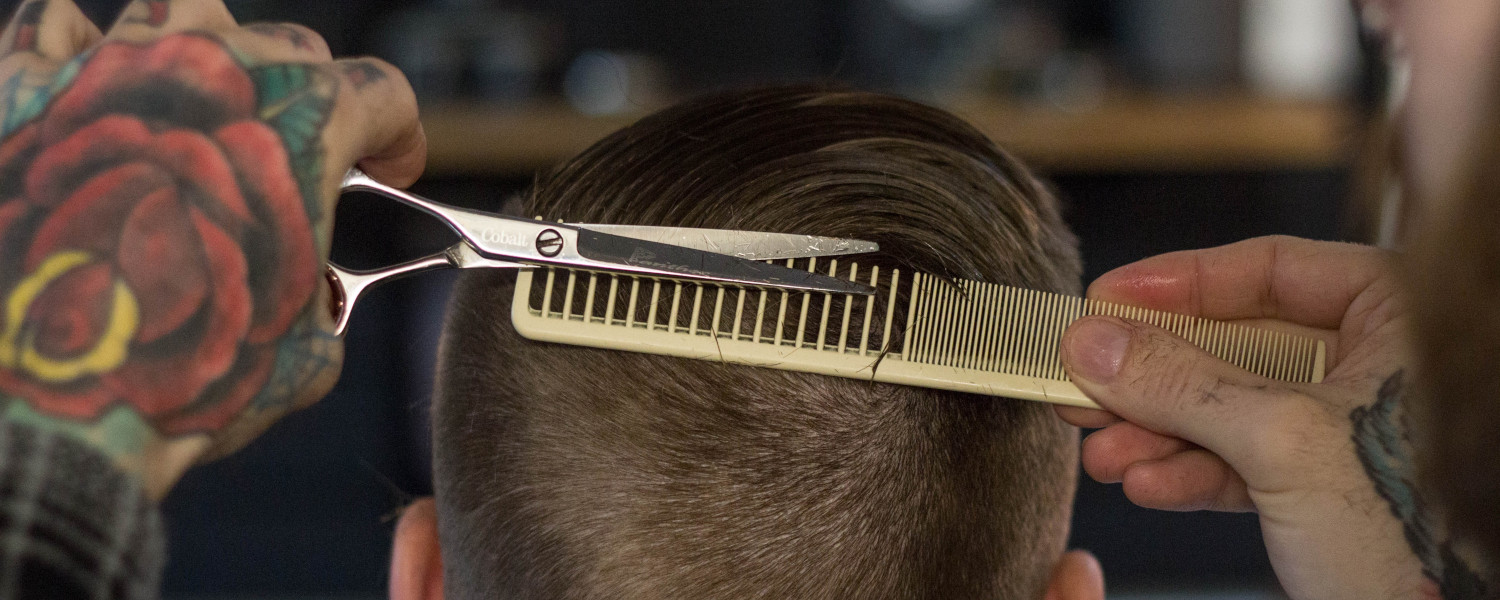Hair follicle drug tests are one of the most common types of drug tests. This leads many cannabis users to wonder: “How long does THC stay in hair follicles?”
When consumed, THC enters the bloodstream and reaches several different body parts, including the hair follicles. As the hair grows, the THC remains in it. While the cannabinoid remains in the hair longer than other bodily excretions, like urine or skin cells, the results of the hair follicle tests may not always be reliable.
This article will clarify how long THC stays in the hair, the process of testing hair follicles, and how to detox your hair to prepare for cannabis drug testing.
THC and Your Hair
THC is short for delta-9-tetrahydrocannabinol. It is the main compound in the cannabis plant, responsible for many of the reported intoxicating and potentially therapeutic effects known as the “high.”
THC naturally exists in the plant as THCA and converts to THC, the plant's intoxicating compound, when heat is added in a process known as decarboxylation. Once consumed, the THC enters the body and is dispersed through the bloodstream. From there, it interacts with various parts of the body and brain through the endocannabinoid system.1
One place THC can be transferred into is the hair via sebum, an oily substance naturally produced by the body. Sebum is excreted through the skin and the hair, helping to lubricate the hair follicle.
THC can also end up on the hair via contamination or application, like through the fingers after touching cannabis material, applying THC-contaminated CBD or hemp oil, or applying a cannabis topical directly to the hair or skin.2 Through this mode of transfer, others who may not have consumed cannabis directly may have traces of THC found on them. This is one of the reasons researchers believe hair follicle drug tests may produce inaccurate results.3
How Long Does THC Stay in Hair Follicles?

When consumed, THC from the cannabis product enters the body and interacts with the endocannabinoid system to deliver its effects. THC and other cannabinoids remain in the body, absorbed and stored in fat until excreted through bodily fluids.4
Through some testing methods, clinicians can detect cannabis in the system as long as 2 to 5 days for light users and 1 to 15 days after the last exposure for heavy users. So, even if you have abstained from cannabis use for a few days before your drug test, THC may still be detectable. Urine samples, especially in heavy consumers with high body fat, can detect THC consumption up to 30 days after the most recent use.
Hair samples can detect usage as far back as 90 days.5 The extended time that cannabis stays in the hair makes hair follicle testing ideal for those looking to detect usage further back in time in cases where pre-employment screening is needed.
Several factors can affect how long THC stays in hair follicles, and as the hair grows, the traces of THC remain in the hair and follicle. These factors, along with the frequency of use, dosage, metabolism, method of use, and other health factors, like diet and exercise, all affect the length of time THC stays in the system.6
What is a Hair Follicle Drug Test?

When THC enters the body, it is metabolized into a byproduct called THC-COOH, the substance detected in drug tests to give a positive result. The body can store this byproduct in places like fat cells for weeks or months.
Clinicians can detect cannabis up to 90 days after its usage in hair follicles.5 To conduct a hair follicle test, clinicians collect 90 to 120 strands of hair from the head or other body parts and send them to the lab for testing.
Hair follicle tests have been linked to racial bias. Research has found that some drug compounds link to melanin, a compound found in darker hair. In comparison to less pigmented hair, higher concentrations of drugs were found in darker hair despite equal drug dosage administration.7
How to Pass a Hair Drug Test

The only way to guarantee you pass a drug test without fail is by abstaining from cannabis use for 90 days or more. For users who are unable to abstain from cannabis use, like medical patients, this may not always be a realistic option. In these cases, searching for an employer who does not require drug testing may be better.
For those who can, a detox is the next best method when trying to pass a hair follicle drug test. Detoxes should start 90 days before your test, if possible. Natural detox methods are the safest and include lifestyle changes, like diet and exercise.
Be mindful, though, that while exercise may increase the rate at which cannabis is detoxed out of your system, it may also increase the likelihood of a positive test in the short term. This is one reason why it’s best to start detoxing from cannabis as soon as possible.
Some cannabis users turn to hair removal methods, like shaving, to remove hair before a follicle test. While this can eliminate some areas from which the test administrators may take a sample, it can also lead them to believe you are dodging the test. Additionally, hair samples may be taken from several parts of the body.
Some users have turned to resources that claim certain shampoo products will remove traces of THC or cannabis from the hair. These products contain ingredients that may damage the hair and scalp and may also be traceable through drug tests. Depending on the state you are in, trying to cheat a drug test may result in serious legal penalties.
The best way to ensure that all traces of cannabis are out of your system is to abstain from consumption for as long as possible. If you are a daily or high-dose consumer, be mindful of adverse potential withdrawal effects, including irritability, headaches, reduced appetite, or increased anxiety.
If you are a medical cannabis patient, consult your doctor before changing your dosage or preparing for a drug test.
What About CBD and Hair?
CBD is short for cannabidiol, another cannabinoid found in the cannabis plant that has become increasingly popular over the years. It provides several different therapeutic benefits without the intoxicating effects of THC. Patients have used it to help with pain, stress, and sleep.8
Since CBD does not produce an intoxicating effect, users wonder if CBD stays in the system and will affect a drug test like the hair follicle test. Since many drug tests are testing for traces of THC-COOH, CBD is unlikely to trigger a positive result.
Users should still be mindful of the type of CBD they consume. While hemp-derived products may say that they are CBD only, they may still contain up to 0.3% THC or more if the company has poor quality control in place.9 These small traces may not be detectable if the user consumes small sporadic dosages, but this may differ for daily consumers.
If you are consuming products with trace amounts of THC in them, the cannabis will stay in your system similarly to THC-rich products: stored in fat cells and passed through the body via urine, sebum, hair follicles, or other bodily fluids. In these cases, following the same natural detox methods as you would for high-THC products is best. These methods include abstaining from CBD, changing your diet, and exercising.
Various factors, including dosage, metabolism, diet, type of product used, and frequency, will affect how long CBD stays in your system.
Conclusion
Sebum excretions of the skin are just one way THC can leave the body, making hair collection and testing one of the most common ways to test for cannabis use. THC can remain traceable in the hair for up to 90 days and sometimes longer. CBD is unlikely to trigger positive drug test results, but users should still be mindful of the type of products they are using to make sure no amount of THC is present.
While it may be tempting to shave your entire body of hair before taking a hair follicle test, that may be more suspicious than practical. And even if you can come back and retake the test when your hair grows back, the shaving will not have removed any remaining traces of THC in your system.
Several factors will affect how long cannabis remains in your hair, including your dosage, method of consumption, frequency of use, diet, metabolism, and even the length and color of your hair. The most effective way to remove any traces of THC in your system is to naturally detox the body through abstinence of use, diet, and exercise.
It can be tempting to turn to quick-fix, over-the-counter products that claim rapid results, like shampoos, but the chemicals in these products may do more harm than good. They could potentially harm your hair or scalp and be detectable on the drug test. Depending on where you’re living, tampering with your drug test may result in serious legal consequences.
Detox methods may also induce withdrawal effects in some users. Consult with a physician if you are a medical cannabis patient or are worried about adverse effects from changing your consumption habits.
Resources
- Lu HC, Mackie K. Review of the Endocannabinoid System. Biol Psychiatry Cogn Neurosci Neuroimaging. 2021;6(6):607-615. doi:10.1016/j.bpsc.2020.07.016 ↩︎
- Paul R, Williams R, Hodson V, Peake C. Detection of cannabinoids in hair after cosmetic application of hemp oil. Sci Rep. 2019;9(1):2582. doi:10.1038/s41598-019-39609-0 ↩︎
- Moosmann B, Roth N, Volker Auwärter. Finding cannabinoids in hair does not prove cannabis consumption. Scientific Reports. 2015;5(1). doi:https://doi.org/10.1038/srep14906 ↩︎
- Lucas CJ, Galettis P, Schneider J. The pharmacokinetics and the pharmacodynamics of cannabinoids. Br J Clin Pharmacol. 2018 Nov;84(11):2477-2482. doi: 10.1111/bcp.13710. ↩︎
- Hadland SE, Levy S. Objective Testing: Urine and Other Drug Tests. Child Adolesc Psychiatr Clin N Am. 2016;25(3):549-565. doi:10.1016/j.chc.2016.02.005 ↩︎
- Lucas CJ, Galettis P, Schneider J. The pharmacokinetics and the pharmacodynamics of cannabinoids. British Journal of Clinical Pharmacology. 2018;84(11):2477-2482. doi:https://doi.org/10.1111/bcp.13710 ↩︎
- Cone EJ, Joseph RE. The Potential for Bias in Hair Testing for Drugs of Abuse. CRC Press eBooks. 2020:69-93. doi:https://doi.org/10.4324/9781003068884-4 ↩︎
- Moltke J, Hindocha C. Reasons for cannabidiol use: a cross-sectional study of CBD users, focusing on self-perceived stress, anxiety, and sleep problems. Journal of Cannabis Research. 2021;3(1). doi:https://doi.org/10.1186/s42238-021-00061-5 ↩︎
- Li J, Carvajal R, Bruner L, Kaminski NE. The current understanding of the benefits, safety, and regulation of cannabidiol in consumer products. Food Chem Toxicol. 2021;157:112600. doi:10.1016/j.fct.2021.112600 ↩︎
The information in this article and any included images or charts are for educational purposes only. This information is neither a substitute for, nor does it replace, professional legal advice or medical advice, diagnosis, or treatment. If you have any concerns or questions about laws, regulations, or your health, you should always consult with an attorney, physician or other licensed professional.




